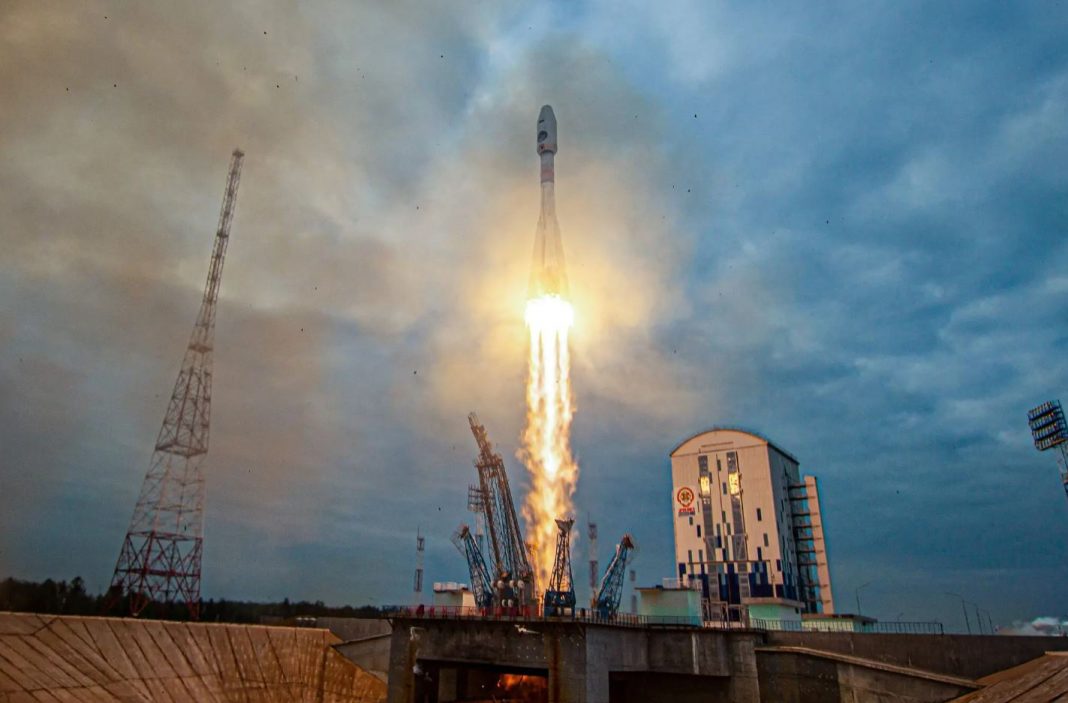Russia’s space agency said on Sunday that a robotic spacecraft that was its route to the lunar surface has crashed into the moon, citing early inquiry findings one day after losing touch with the ship.
It’s the latest setback for a country that, as the Soviet Union during the Cold War, was the first to launch a satellite, then a human, and finally a female astronaut into space.
Russia’s first lunar space launch since the 1970s, the Luna-25 lander, reached lunar orbit last Wednesday and was scheduled to land as soon as Monday. The spacecraft reportedly started its engine to enter an orbit that would prepare it for a lunar landing around 2:10 p.m. on Saturday afternoon Moscow time, as reported by Roscosmos, the state organisation that manages Russia’s space programmes.
Roscosmos said Sunday that communication with the spacecraft had been lost 47 minutes after engine ignition. Luna-25 had veered off its intended orbit, and attempts to restore contact had failed.
The goal of the August 11 launch of Luna-25 was to make it the first spacecraft to the moon’s south pole. That region of the moon is of interest to space agencies and commercial firms on Earth because of the possibility that it contains water ice that may be utilised by astronauts in the future.
The major goal of Luna-25 was to test lunar landing technologies, therefore the lander’s loss at a less perilous phase of the project just draws further attention to Russia’s space woes.
The rocket’s takeoff from Earth and the lunar landing are the two most nerve-wracking times for lunar missions. India, an Israeli organisation, and a Japanese firm have all attempted lunar landings in the previous four years, with each failing in the final minutes of descent to the surface.
Russia’s last large robotic interplanetary mission, Phobos-Grunt, failed in 2011 due to these same technical flaws. It’s also possible that human mistake will play a role, as it did in 1999 when NASA’s Mars Climate Orbiter was lost in the Martian atmosphere due to a conversion error between metric and imperial values.
Until the very last manoeuvre, mission controllers “managed to cope with it successfully,” Dr. Eismont said. However, Luna-25’s last burn, which was supposed to propel the spacecraft into an orbit 11 miles above the earth in preparation for landing, did not proceed as planned.
More than 35 years have passed since the Soviet Union’s last complete victory. Vega 1 and Vega 2 were identical twin spacecraft that took out from Earth six days apart. The two spacecraft sailed by Venus six months later, with one releasing a balloon into the atmosphere and the other releasing a capsule with a lander that safely landed on the hellish planet’s surface. The two spacecraft then approached Halley’s comet in March 1986 to within around 5,000 miles, capturing photos and examining the comet’s dust and gas from its core.
The mission to land on Mars’ bigger moon Phobos and bring back soil and rock samples to Earth reached its humiliating low point in 2011. However, Phobos-Grunt was unable to leave Earth’s orbit and perished. It entered Earth’s atmosphere and exploded into flames after a few months.
During its yearlong mission, Luna-25 was supposed to analyse the moon’s surface materials. It was also planned to pave the way for a future Russian and Chinese lunar outpost by demonstrating technology that would have been employed in a series of robotic missions.
Other cooperation space programmes between NASA and the European Space Agency and Russia were halted following the invasion of Ukraine. That means Russia will have to source other components—originally slated to come from Europe—for the lunar missions.
Vladimir Kozhevnikov, the head designer for Russia’s future space station, recently informed the Interfax news agency that the first flight of the contemporary Oryol capsule, which will replace the ageing Soyuz, would occur in 2028.
Dmitry Rogozin, the former director of Roscosmos, predicted in 2020 that Oryol’s first flight would occur in 2023. This means that the launch schedule has slid by five years in only three years.
India will be the second nation to have the honour of landing the first probe near the south pole of the Moon. In July, it launched Chandrayaan-3, a mission that would take a more circuitous but fuel-efficient path to the moon. Wednesday is the day they plan to try to land.

